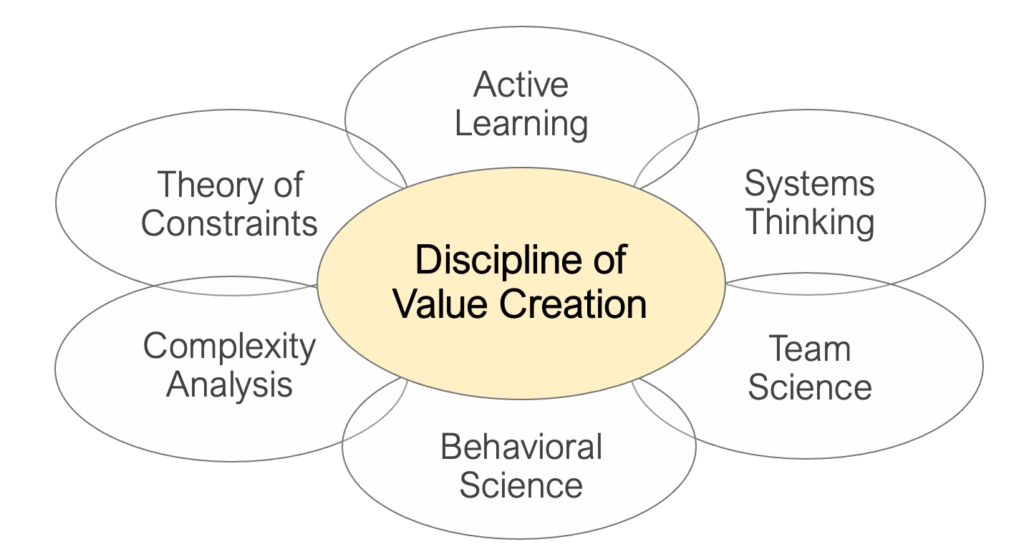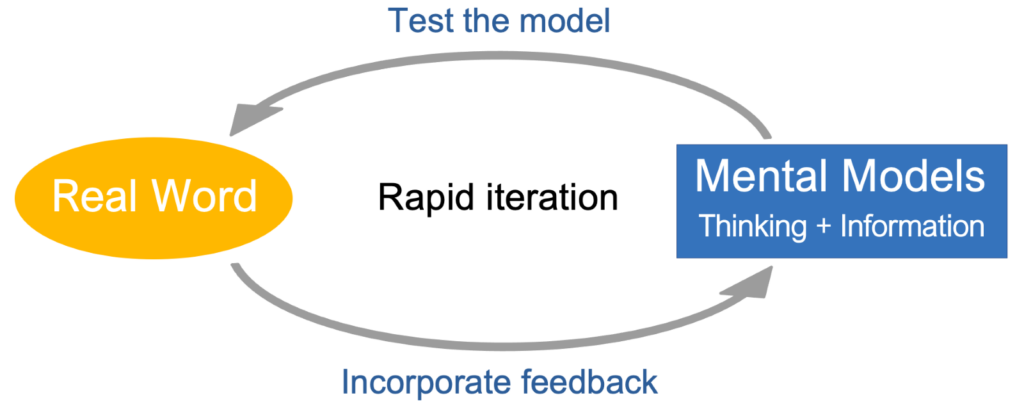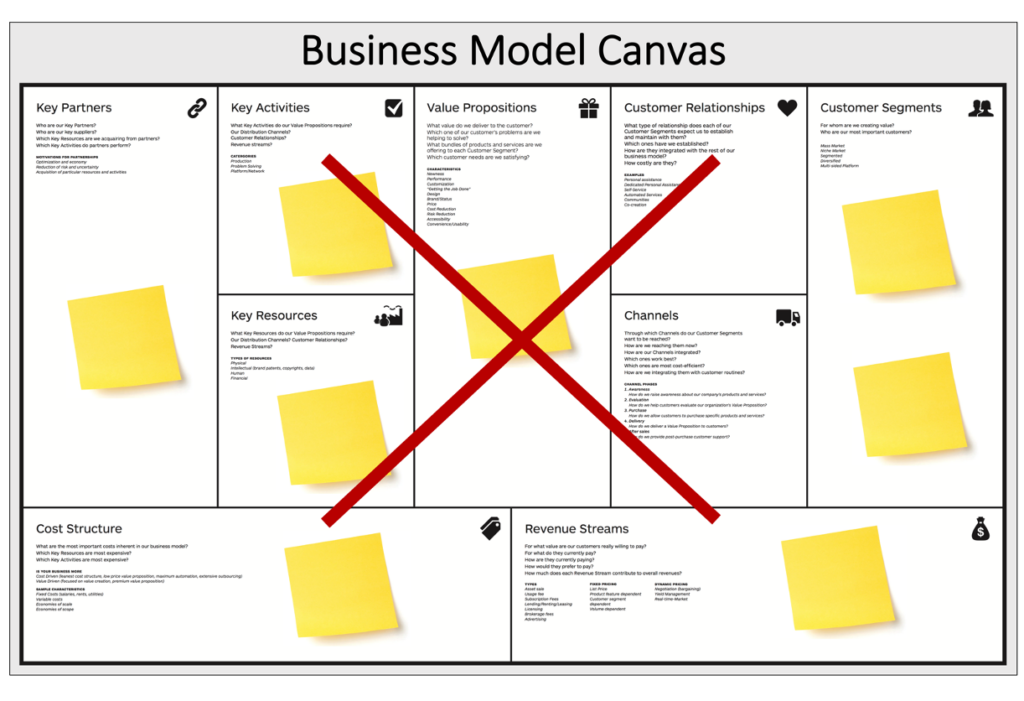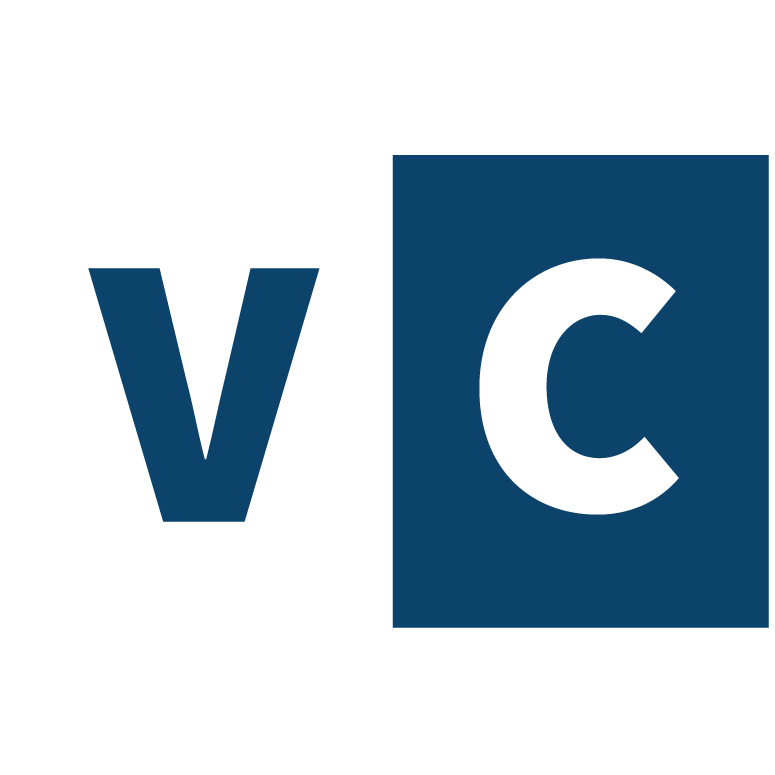1. Curt Carlson: For Value Creators, The Customer Is The Business Model

Curt Carlson is both the leading theorist and the leading practitioner of the economic science of value creation – the practice and discipline firms follow for the profitable generation of new, more valued experiences for customers. He teaches value creation in his work for Universities such as WPI, provides hands-on training workshops for companies through his Practice Of Innovation consultancy, and built a track record of marketplace success as CEO of SRI.
He joined The Value Creators podcast to explain value creation as a business model. He recently explained the theory and practice of value creation in a LinkedIn post titled The Customer Centric Enterprise, which we repeat here.
The Customer-Centric Enterprise
Curt Carlson, Ph.D. Professor of Practice, Northeastern University and Distinguished Executive in Residence, WPI
Toward a Theory of Value Creation and Innovation
Summary
Value Creation: The primary objective of an enterprise is to create sustainable value for its customers and other stakeholders. Value creation is not a simple task but rather a complex one that involves trade-offs with constraints. Different forms of knowledge, some known and some unknown at first must converge to create new knowledge that addresses an unmet customer need. Critically, value creation is a profoundly human task that requires a deep understanding of human capabilities and weaknesses.
Core Disciplines: A practical management theory must start with the core disciplines that define complex problem-solving and human behavior. These disciplines include active learning, systems thinking, complexity analysis, theory of constraints (TOC), and behavioral and team science. These disciplines, along with other economic and business concepts, define the discipline of value creation. [1]

A family of disciplines set the basis for effective value creation.
The discipline of value creation includes a family of mental models, which provide the basis for value creation across the enterprise. When employees understand and use these mental models and other value-creation principles, enterprises can systematically create customer value and address the needs of all stakeholders.
Focus on Customers
A Core Responsibility: The world’s most influential management thinker, Peter Drucker, said, “The purpose of a company is to create and keep a customer.” Thus, every employee’s responsibility is to support that goal and facilitate value creation for others, whether external or internal. That new value can range from the trivial to the transformational, but the opportunities in every position are continuously available.
Mental Models: A mental model is a cognitive framework or representation of a particular subject or issue that an individual holds in their mind. It is a mental construct that helps individuals understand and interpret information about the world, make sense of complex phenomena, and make decisions.
Mental models can be based on personal experiences, education, culture, and other factors. They may be consciously developed or unconsciously formed over time. Mental models help individuals process information efficiently and make sense of complex systems or situations by providing a mental shortcut or heuristic. They are our filters through which we see and understand the world.

Mental models are the filters through which we understand the world.
However, they can also limit an individual’s ability to see alternative perspectives or new information that does not fit within their mental models. Therefore, one must be aware of one’s mental models and be open to modifying or updating them to understand the world better to make more effective decisions. [2]
Mental models are built up over time as we interact with the world, collect information, test it, gain feedback, and think about it. As a rule it takes many feedback iterations over years to develop mental models that can be used rapidly and intuitively.

How we develop our mental models through feedback and iteration.
Productive mental models are essential for achieving systematic value creation and innovative success. For example, since value creation is a collaborative, creative process, barriers to communication and the flow of critical knowledge inhibit innovation. Specifically, shared language and concepts across an enterprise are essential for maximizing efficiency and effectiveness. If missing, their lack can create a kind of Towel of Babel.
Consider, for example, how ineffective the Internet would be without a shared, global network protocol. Likewise, the core Enterprise communication protocol for value creation is the language and concepts for identifying and developing sustainable solutions for others. Management’s goal is to make communication and collaboration for value creation transparent across the enterprise. Achieving this requires using and sharing concepts, frameworks, and mental models that describe and accelerate the value-creation process.
There are many functions in a company requiring different skills and mental models. For example, professionals in finance, marketing, operations, and R&D all use unique concepts and tools to enhance productivity. Nevertheless, the core mental models and methods they must all share are those for identifying and creating value for their customers, whether external or internal. At the same time, misapplication of models or using the wrong ones can confuse or even guarantee poor performance.
Customer Mental Models: Value creators must understand the existing mental models of their customers, create new ones for their offerings, and then convince customers to replace their old mental models with the new ones. It is rare that customers can describe their mental models or know what is possible. A famous. example is when Steve Jobs replaced the concept of a “smart phone” with the “iPhone.”
Thus, the value creation process looks like the picture above, which is based on repeatedly observing, thinking, testing, and incorporating feedback. An effective value creation process accelerates that learning process to create new value whose “mental model” is compelling to customers.
The Enterprise Objective: When every employee understands that value creation is a responsibility of their job, and they have the core skills required in a productive environment, it can create a Customer-Centric Enterprise (CCE). [1] Today only a few companies have fully exploited this capability, which means massive efficiency and productivity improvements are still possible for the benefit of society.
A Complex Task: Creating value is a complex task that involves identifying and solving significant problems for end-users and stakeholders, whether those end-user needs are known at the outset. Balancing the needs and wants of different stakeholders, such as customers, employees, partners, and shareholders, while considering cost, quality, and time factors is crucial for effectively creating value.
Value creation is an iterative process requiring continuous improvement and adaptation. Valuable new offerings emerge from the convergence of different forms of knowledge that satisfy core value creation and innovation principles. Successful value creators and innovators learn from their experiences and adapt. People often say that success requires failing fast. No. Success requires learning fast. Thus, the best learning principles are required.
Improvements Possible: Almost all companies can be more value-centric by broadly sharing the mental models for value creation. You can prove how much progress is possible by simply asking middle managers in a company to describe their value-creation methods. If they can’t explain them, they likely don’t exist. At best, their value-creation processes will be inefficient. Often it is a total failure.
During a conversation with an SVP who had worked for a famous Silicon Valley company for 25 years, she said they had tried seven times to create a new business incubator and had spent billions of dollars but they had no success. They never set it up using the required value-creation concepts and methods.
How much more successful can an enterprise that applies basic value creation principles as a Value-Centric Enterprise be? Our experience indicates, typically, over a three to five year period, a factor of two in the efficient use of R&D and innovation resources and over ten times in new marketplace value.
Rarely do we see an enterprise limited by a lack of opportunities, great people, or sufficient resources. The issue is inevitably their poor value-creation methods. With the thousands of company teams, we have worked with, typically, less than 25% of their new initiatives would deliver any value if completed. We don’t decide that; we just provide the missing evaluation framework. University R&D and innovative initiatives are, as you might expect, worse.
Mental Models
Characteristics: Mental models are essential for accelerating the value-creation process. These models are frameworks or representations of a particular subject or issue that aids in problem-solving and decision-making. By using appropriate mental models, managers can better identify and develop solutions that meet the needs and wants of both external and internal customers. [2]
Effective value creation mental models satisfy these principles:
- Concise: Clear and readily remembered without unnecessary detail.
- Relevant: Applicable and valuable in the context of achieving the goals.
- Consistent: Cohesive and logically sound, without conflicting concepts or ideas.
- Adaptable: Flexible and able to be applied in a wide variety of situations and settings.
- Verifiable: Able to be tested and validated through empirical evidence or data.
Learning: When a professional uses a new, effective mental model, learning can be efficient and effective, although it will still take hundreds of interactions. Mental models are not learned only from reading books or listening to lectures. They are mastered through constant practice and trial and error while doing the task, usually over years of application.
At the same time, professionals often hold onto outdated or unproductive mental models, which they have developed over years of experience. However, changing these mental models is typically very difficult.
Unlearning: Research from the behavioral sciences shows that losing something is perceived to be ~2.3 times worse than gaining something of the same kind and magnitude. That is, the loss of $100 is perceived to be 2.3X worse than the gain of $100. As a result, it is challenging for professionals to let go of their old mental models and adopt new ones, even when the new models are significantly better. Thus, loss aversion can slow or stop the learning process, as the professional must abandon the old model before fully embracing the new one. [3]
When a company undergoes a significant shift in its business model, it often requires a corresponding change in its organizational strategy and workforce. The workforce changes are because existing managers and employees may need to update their working methods with mental models aligned with the new strategy. But untraining and retraining these staff members is time-consuming and resource intensive. Ultimately, the strong inertia of their old mental models might lead to failure. Thus, replacing these individuals with new hires who align with the new strategy is often required.
Exponential Complexity: Another challenge for professionals is that most value-creation frameworks must be simplified to be remembered, understood, and applied. Even a framework of four or five elements is beyond human capabilities. Frameworks with too many variables is only one of the problems. Humans can remember more items as expressed in the general rule, seven plus or minus two.
The problem is the computational impossibility of dynamically evaluating each variable relative to the others. As interactive elements are added to a framework, its complexity increases exponentially. With just three, there are seven different ways for the items to be connected; with seven, there are 127. Worse, the elements can interact or change over time as the value-creation process develops. Dealing with this level of complexity is an impossible human task.
Developing a new mental model requires hundreds or often thousands of trials before fully internalized. For example, George Heilmeier, a former DARPA Director, said he was frustrated that so few could remember or understand his checklist of eleven items. The problem is that 11 items can be connected in over 2,000 ways. Thus, searching for a new, valuable innovation cannot start by addressing all 11 items simultaneously.
That complexity is also why the BMC, with two-dozen elements, is ineffective as a value-creation framework. It is a checklist.

This is an excellent checklist, not a good value creation framework.
In one iconic company, the SVP of R&D asked us to help explain why the situation was worse after the company spent millions of dollars on training staff using a version of the Lean Startup methodology. Lean has many excellent features, but, as a starting point for value creation, it needs to be simplified. Unfortunately, the complexity it introduced into the company made the results worse; not better.
First Things First: All the elements that make up a detailed business plan must eventually be addressed. But the value creation process starts with the minimum number of fundamental elements. Then, as they are addressed, other critical factors are added until a complete plan is developed.
Including unnecessary variables at the start is another cost. Keeping track of them represents an unnecessary expense in time and mental effort. By analogy, when going on a trip, those extra variables are like adding books to our bag, which we will only read upon returning home.
Bottom Line: Value creation is a complex task. It starts by identfying and addressing the most fundamental questions.
Foundational Disciplines
Below are summaries of disciplines that help define effective value-creation methods, concepts, and mental models. The different disciplines often reframe similar principles but from different perspectives. That reframing helps to understand them better and proves their primacy. After these sections, I will describe the most significant mental model that establishes the foundation for a Value-Centric Enterprise.
1. Active Learning
Value creation is a learning, creating, systemizing, and improving activity. Active learning is the educational science that describes how to do this best. [1] By following the principles for active learning, enterprises can enhance their problem-solving skills and better create sustainable value for all stakeholders:
- Engagement: Focus on an activity that matters and is relevant to the goals of the enterprise.
- Continuity: Continuously work on the task, ensuring progress each day or week
- Feedback: Provide real-time feedback to ensure that learning is optimized and mistakes are quickly identified and corrected.
- Teamwork: Work in small teams with unique, complementary skills to include needed perspectives, knowledge, and solutions.
- Mentorship: Engage mentors and peers to gain insights from experienced professionals to ensure that the best practices in the field guide learning.
- Big ideas: Start with the big ideas to ensure the learning process is grounded in the most significant concepts and issues.
- Mental models: Use concise mental models and multiple representations to optimize learning by considering different perspectives.
- Established knowledge: Leverage established knowledge to ensure the learning is grounded in the best practices and techniques in the field.
- Human values: Embrace positive human values with motivating incentives to ensure the learning process is engaging, enjoyable, and rewarding.
- Assessment: Implement the learning process in a complete system with an assessment system to track progress and ensure the success of the learning objectives.
Key Insight: These principles must be performed as part of a complete system.
2. Systems Thinking
Systems thinking helps understand and analyze complex problems by looking at the system as a whole and the relationships between the parts. Systems thinking requires managers to understand the constraints and interdependencies within the system and to make decisions that satisfy those constraints while creating value for stakeholders. By applying the principles of systems thinking, managers can identify the root cause of the problem, develop and implement solutions, and continuously evaluate and adjust the plan. [2] These are the three DSRP rules of systems thinking:
- Distinguish: Break down complex ideas or systems into distinct parts and identify their unique characteristics.
- Systems: Look for patterns and relationships among the parts and identify how they work together.
- Relationships: Understand the connections and interactions between the parts of the system.
- Perspectives: Identify different viewpoints and perspectives on the system and consider them to gain a deeper understanding.
Key Insight: Just a few fundamental rules can deterime the performance of an otherwise incomprehensibly complex sytem.
3. Complexity Analysis
Value creation is a complex activity. Complex systems have a set of interconnected elements that exhibit emergent behavior, which cannot be predicted or explained by studying the individual parts in isolation. These systems typically have multiple interacting factors that can create nonlinear and unpredictable outcomes, and their behavior can change over time in response to internal and external influences. Examples of complex systems include natural ecosystems, financial markets, transportation networks, and social systems. Understanding and managing complex systems require approaches that account for interdependencies and nonlinear relationships. Solutions to complex systems, such as value creation, requires:
- Understanding interactions and patterns.
- Analyzing emergent properties.
- Considering feedback loops and time delays.
- Recognizing nonlinear and unpredictable behavior.
- Using simulation and modeling.
Key Insight: Feedback loops can lead to exponentialy increasing output: leverge them or avoid them.
4. Theory of Constraints (TOC)
The theory of constraints is a management methodology that aims to identify and remove the constraints that limit an organization’s ability to achieve its goals. The objective is to identify the constraint in a system that is the weakest link, which determines the system’s performance. [4] The basic principles are to:
- Identify the constraint: Identify the bottleneck or constraint limiting the system’s overall performance and quantify its impact.
- Exploit the constraint: Recognize that it represents an opportunity to improve the system’s overall performance and exploit it to its fullest potential.
- Subordinate other activities: Focus on the most critical actions to improve the system’s performance and subordinate other activities.
- Elevate the constraint: Invest resources and effort to overcome the constraint to elevate the system’s overall performance.
- Repeat the process: Continuously assess the system’s performance, identify new constraints, and repeat the process to improve performance constantly.
Key Insight: Start with the one critical constraint preventing a better solution. Then continiue.
5. Behavioral Science
Behavioral science shows how people make decisions and behave in various situations. Biases are tendencies to think or act in specific ways that can lead to flawed decision-making. Confirmation bias, availability bias, and anchoring bias are three types of bias that can interfere with effective management. Managers can make better decisions by understanding these biases:
- Confirmation bias: People seek information confirming their beliefs.
- Availability bias: People overvalue information readily available to them.
- Anchoring bias: People are overly influenced by the first information they receive.
- Herding behavior: People conform to group norms and follow the crowd.
- Dunning-Kruger effect: People overestimate their abilities with limited knowledge or experience.
- Loss aversion (Prospect Theory): People’s perception of gains and losses is not symmetrical, leading to a bias towards inaction. Losses are 2.3X worse than an equivalent gain.
- Self-serving bias: People attribute success to their abilities and failures to external factors.
- Overconfidence: People tend to overestimate their abilities and the accuracy of their judgments.
- Sunk cost fallacy: People continue investing in a project or idea even when it no longer makes sense because of the already invested resources.
- Framing Effect: How information is presented can influence people’s perceptions and decisions.
Key Insight: These biases and fallacies are well known but cannot be passively avoided.
The Discipline of Value Creation
Framework: The discipline of value creation is concerned with producing superior, innovative efficiency and effectiveness. An inspiration is Douglas Engelbart, the pioneer who created the computer mouse and the fundamentals of personal computing. In addition to his transformative innovations, his driving motivation was to improve our collective intelligence to better address the world’s great challenges. He emphasized that in an exponential world, value-creation processes must be exponential. That is fundamental to the i4i value creation methodology. [4 ]
The i4i value creation methodology adheres to Engelbart’s core principles and the other principles outlined above. A Consumer-Centric Enterprise (CCE) uses these guidelines:
Customer Centricity
- Purpose: A CCE fulfills its mission and strategy by continuously creating significant, sustainable value for its customers and stakeholders.
- Responsibility: All CCE employees are responsible for creating customer value. This means having the required skills and being proactive in identifying and addressing unmet customer needs, whether external or internal.
- Impact: The CCE’s sustainable competitive advantage results from delivering unique products and experiences that go above and beyond what is expected. This means using efficient, effective, and comprehensive value-creation methods.
Methods
- Improvement: CCEs proactively adapt to market changes and respond to customers’ needs. This means using value-creation methods, processes, and tools to rapidly identify new opportunities and threats in the market ecosystem and across the enterprise.
- Tools: CCEs use tools, frameworks, and methods that accelerate value creation. This means using those that satisfy the fundamentals of active learning, complexity analysis, and systems thinking. AI is an emerging power tool.
- Metrics: CCE employees understand the enterprises’ metrics for success. This means measuring key metrics, including customer satisfaction, loyalty, and lifetime value.
- Reach: CCEs ensure that all employees know the importance of customer centricity. This means providing training and processes so that all share the core mental models for value creation.
Employees
- Collective Intelligence: Because all significant opportunities are interdisciplinary, CCEs leverage the collective genius of their teams and partners. This means having a transparent environment where employees are incentivized to participate in forums to share ideas and collaborate.
- Human Values: Proactive collaboration is facilitated by all CCE employees exemplifying respect for others and integrity. This means a workplace where employees are valued and respected in an ecosystem of honesty and transparency.
- Motivation: CCE employees are motivated to unleash the enterprise’s potential. This means having the opportunity to achieve appropriate recognition and rewards and having opportunities to learn and grow professionally.
- Leadership: CCE management leads the way. This means they model the behaviors and human values required for creating a customer-centric enterprise.
Managers use different methodologies and frameworks to create value more efficiently. Examples include Six Sigma, Scrum, Agile, Design Thinking, Business Model Canvas, Stage-Gate, and Waterfall. By applying these frameworks, managers better identify unmet customer needs, generate potential solutions, prototype, test, and deliver the final results.
Examples of these different frameworks are listed in the Appendix. When appropriately applied, they are all effective to some degree. However, while some adhere to the fundamental value-creation principles outlined, others do not. That implies they are less effective. Therefore, it is essential to evaluate the suitability of each framework for the task at hand and the organization’s goals. They are like a family of tools in a carpenter’s toolbox that perform different functions.
The core principles from the disciplines listed above are included in the i4i methodology we teach. In addition, we find that the “3-Laws of Value Creation” must be in place for systematic, innovative success. [5,6] They are:
- Important Unmet Customer and Market Needs: Necessary to make a difference. We can only make significant contributions if we work on important unmet needs.
- Shared Mental Models: Value-creation language, concepts, and tools are required for effective collaboration. We can only communicate effectively if we share the same core concepts and language.
- Recurring Team Feedback: Structured team meetings to learn, create, and improve faster than the competition. We can only solve complex problems if we share essential knowledge and diverse perspectives.
Here I will only discuss the core value creation mental model we use. References are given for “Important Unmet Customer and Market Needs” and how we provide “Recurring Team Feedback” in Value Creation Forums [5,6].
Shared Concepts
NABC Value Propositions: Our core framework is called an NABC Value Proposition. This stands for the important unmet customer and market Need, the Approach (offering and business model) that addresses that need, the resulting Benefits/Costs (value), and why they are significantly better than the Competition and any alternative.
As described above, mental models must be concise, memorable, fundamental, and interdependent to be effective. You can’t remove any factor because they all interact. NABC satisfies the requirements of systems thinking, it applies to everyone in every position, and the four components are independent but interrelated. [3]. For example, if the unmet Need changes, the other three elements might change to provide a viable new solution.
Customer-Centric Enterprise: The importance of the NABC framework is that it applies to every function and position in the enterprise. When I was CEO at SRI, everyone, from the security guards to our CEOs, knew and understood it. Because of this, every initiative started by identifying the unmet customer Need. That one realization across the enterprise is transformational. It focusses everyone on producing meaningful results, which always start with identifying an unmet end-user need, whether external or internal.
Did everyone at SRI perform perfectly? Hardly. But it fundamentally changed the expectations and behaviors of everyone in the company. It was one of the most significant changes we made when I became CEO after SRI had declined for 20 years and was close to bankruptcy. It allowed us to grow our core business more than three times and systematically create significant innovations, such as HDTV and Siri (now on the iPhone).
If more complicated frameworks were used, such as the Lean Startup or the BMC methodologies, it is almost assured that SRI would have continued to fail and gone away. Instead, the enterprise-wide use of NABC value propositions provided the required value creation foundation. In addition, it provided the predicate for other frameworks appropriate for achieving specific end goals, whether it was a new product, grant, license, or venture.
Conclusion
Value creation is a core responsibility of all professionals. Yet, today, few have those skills and even fewer enterprises teach or use them. Systematic, innovative success requires that all employees share core mental models for value creation.
Productive value creation methods start with the few most fundamental questions. Then, as they are addressed, other value-creation frameworks are used, as appropriate. NABC value propositions satisfy all the requirements for an enterprise-wide mental model to accelerate value creation and innovation. It is the basis for forming a Customer-Centric Enterprise.
PS
In another Post, I will apply the fundamental ideas described here to the popular value-creation frameworks in the Appendix. I will explain what is missing and how it can be improved.
References
- Innovation for Impact, Curt Carlson, Harvard Business Review: https://hbr.org/2020/11/innovation-for-impact
- “Systems Thinking Made Simple,” Derek Cabrera and Laura Cabrera: See Amazon.
- “Thinking, Fast and Slow,” Daniel Kahneman: See Amazon
- Alan Barnard, A Masterclass in the Theory of Constraints,” Youtube: https://www.youtube.com/watch?v=UKIJ-Yfglhs
- Value Creation Forums and NABC Action Plans, Curtis Carlson, Linkedin: https://www.linkedin.com/pulse/value-creation-forums-nabc-action-plans-curt-carlson-ph-d-/99
- Curtis Carlson, “The Starting Point For All Innovations: The 3 Laws & NABC Value Propositions,” Linkedin: https://www.linkedin.com/pulse/starting-point-all-innovations-nabc-value-curt-carlson-ph-d-/
Appendix: Value Creation Frameworks
These are summaries of commonly used value creation and innovation frameworks. In every case, there are variations and often other elements of the methods. These are summaries.
Total Quality Management (TQM)
- Customer focus: Meet and exceed customer expectations.
- Continuous improvement: Always strive to improve.
- Employee involvement: Involve employees in improvement efforts.
- Data-driven decision-making: Use data to make informed decisions.
- Leadership commitment: Strong leadership commitment is essential.
- Process orientation: Focus on understanding and improving processes.
- Continuous training: Provide training and education to employees.
- Supplier partnerships: Develop strong partnerships with suppliers.
- Strategic planning: Use planning to set improvement goals.
- Cross-functional teams: Promote collaboration across the organization.
Six Sigma
- Customer focus: Prioritize the customer’s needs.
- Data-driven decisions: Use data to make informed decisions.
- Process improvement: Continuously improve processes.
- Structured problem-solving: Use methodologies to solve problems.
- Empower employees: Involve and empower employees in improvement efforts.
- Pursue perfection: Strive for near-perfect quality.
Scrum
- Prioritized product backlog: The Project Owner creates backlog based on customer feedback.
- Empirical process control: Use data to make decisions.
- Self-organizing teams: Empower teams.
- Time-boxed iterations: Deliver product incrementally.
- Incremental delivery: Meet customer needs throughout development.
- Continuous improvement: Improve product based on feedback and data.
- Daily Scrum: Hold daily meetings to ensure progress.
- Burndown charts: Visualize progress and team performance.
Agile
- Customer collaboration: Work closely with customers throughout the project.
- Working software: Prioritize working software over documentation.
- Responding to change: Be adaptable and willing to change course.
- Individuals and interactions: Prioritize people over processes and tools.
- Continuous delivery: Emphasize ongoing delivery and improvement.
DARPA Quad Chart
1. Upper left: Program objectives.
2. Upper right: Technical approach.
3. Lower left: Critical technical challenges and risks.
4. Lower right: Schedule and significant milestones.
DARPA Heilmeier Catechism
- What are you trying to do? What is the problem you are trying to solve?
- How is it done today, and what are the limitations of current practice?
- What is new in your approach, and why do you think it will be successful?
- What are the potential risks and obstacles, and how will you address them?
- What are the potential payoffs and benefits, and how will you measure success?
- How will your approach impact broader societal issues and stakeholders?
- How will you ensure your work’s ethical and legal implications are addressed?
- Who will benefit from your work, and who might be harmed?
- How will your work be communicated and disseminated to relevant stakeholders and the public?
- How will you attract and retain the necessary resources and talent to achieve your goals?
Business Model Canvas
- Customer segments: Identify the target customers.
- Customer relationships: Define how the business interacts with each customer segment.
- Value proposition: Determine what value the business offers to each customer segment.
- Channels: Identify the ways the business reaches its customers.
- Revenue streams: Determine how the business earns revenue.
- Key resources: Identify the critical assets the business needs.
- Key activities: Determine the essential tasks the business performs to create value.
- Key partnerships: Identify the strategic relationships the business has.
- Cost structure: Determine the costs associated with running the business.
Design Thinking
- Empathize: Understand the needs and desires of the user.
- Define: Clearly articulate the problem that needs to be solved.
- Ideate: Generate a wide range of potential solutions.
- Prototype: Create a tangible representation of the potential solution.
- Test: Get user feedback and refine the solution based on their input.
- Implement: Deliver the final solution and continue to iterate and improve as needed.
Sequoia Pitch Deck
- Clarity: Be able to summarize the company’s business on the back of a business card.
- Large markets: Address markets that are poised for rapid growth or change.
- Pain killers: Solve a pressing issue for the customer and delight them with a compelling solution.
- Rich customers: Target customers who will move fast and pay a premium for a unique offering.
- Focus: Offer a simple product with a singular value proposition.
- Think differently: Challenge conventional wisdom and outwit the competition.
- Team DNA: Choose your first few hires wisely.
- Agility and resistance: Be able to move quickly and bounce back from setbacks.
- Frugality: Focus spending on what’s critical and start with only a little money.
Copyright Curtis R. Carlson, Practice of Innovation, LLC 2023
Curt Carlson’s N-A-B-C process for innovation: https://hunterhastings.com/wp-content/uploads/2019/10/Curt-Carlsons-N-A-B-C-Innovation.pdf
The N-A-B-C process explained: https://hunterhastings.com/curt-carlsons-systematic-repeatable-process-to-generate-customer-value/


Responses